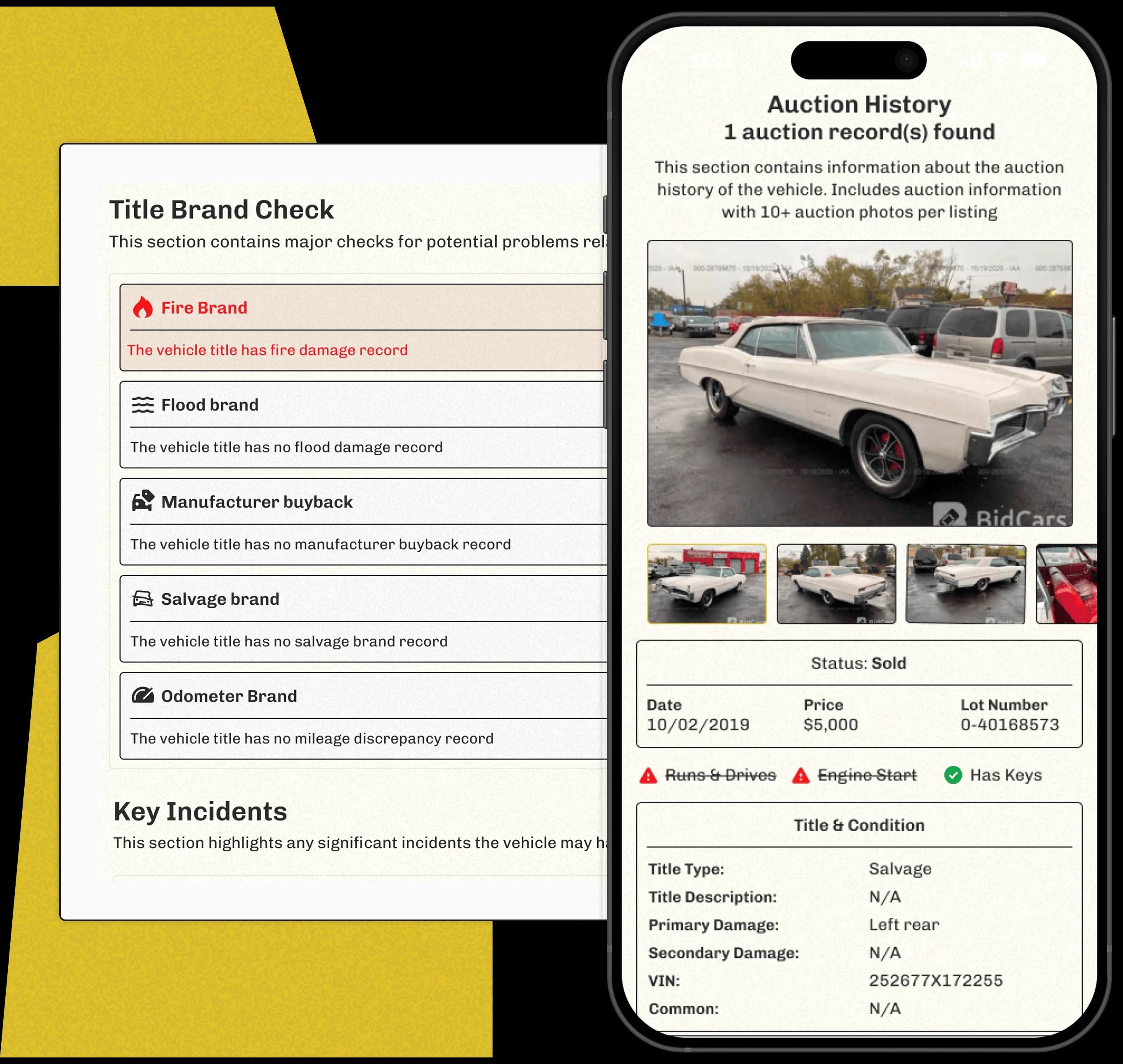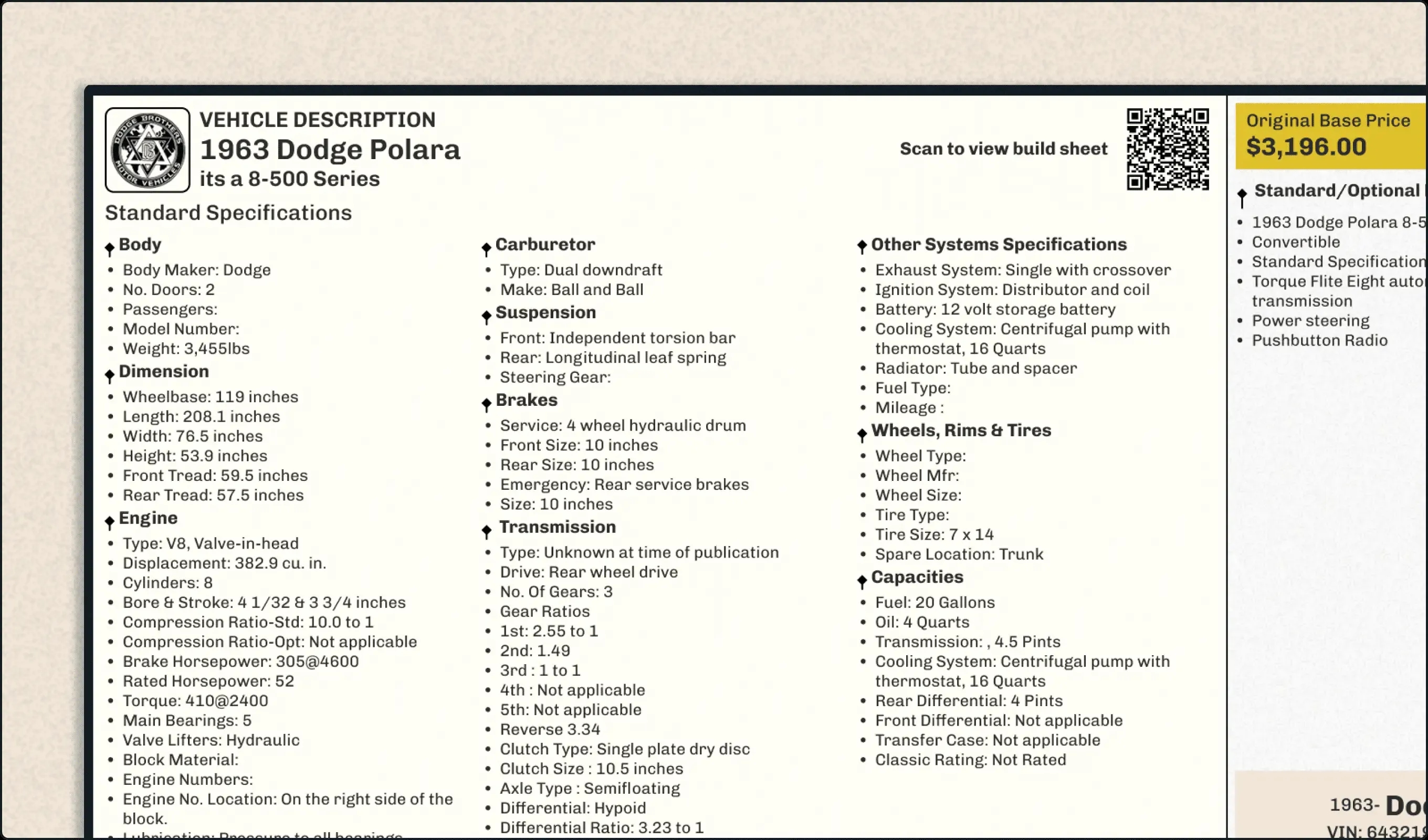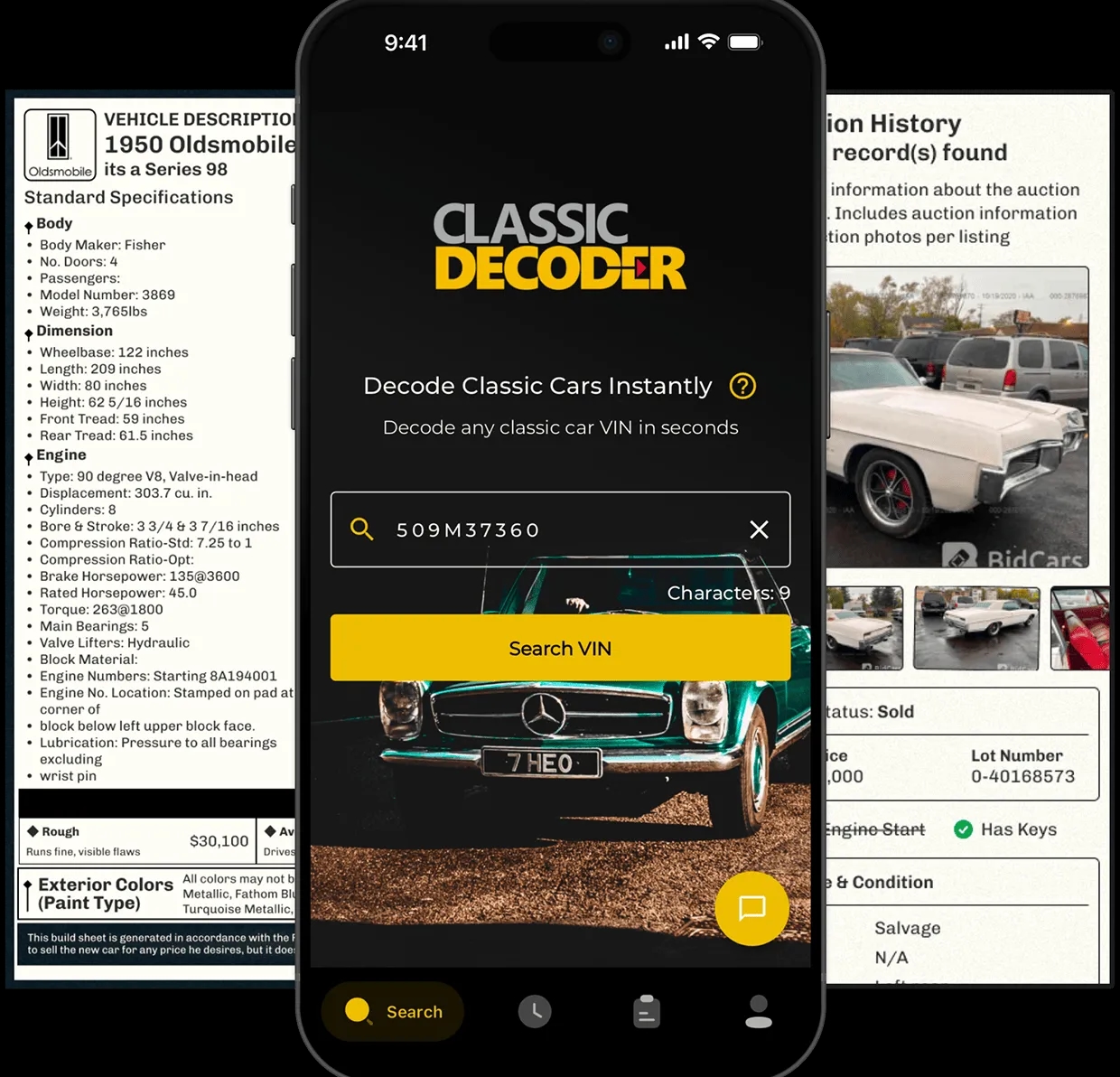1966 Mercury Comet
The '66 Mercury Comet: a cool, compact classic! A step up from Ford's Falcon, it offered a sportier vibe, popular with younger drivers. Its sleek lines and available sporty options made it a bit of a style icon for its time. Solid, reliable, and a piece of '60s automotive history.
Decode Classic VINs to Get Vehicle History Report and Build Sheet
1966 Mercury Comet: A Classic Icon in American Automotive History
The 1966 Mercury Comet stood its ground during a time of fierce automotive rivalry. This classic compact car, a blend of sleek design and high-performance engineering, has captured the hearts of enthusiasts and collectors alike. Let's dive into why the '66 Comet remains a symbol of 1960s Americana.

1966 Mercury Comet Models:
Select the vehicle's model to see the correct data for it.
How Much is Mercury Comet Worth?
Original MSRP :$2,263.00
Outstanding
Clean
Average
Rough
1966 Mercury Comet Specs
Interested in buying a classic car or selling one?
Access detailed history reports for classic vehicles from hundreds of manufacturers.
- Accident Records
- Theft Records
- Loan & Lien Information
- Auction Information
- Salvage Information and more

History of the Mercury Comet
Introduction to the Mercury Comet
Introduced in 1960, the Mercury Comet was crafted to bridge the gap between the smaller economy vehicles and larger full-sized cars. Initially, it was a standalone marvel until it seamlessly blended into the broader Mercury lineup. This strategic positioning attracted the American audience who craved something that balanced performance with practicality.
Generations of Style and Performance
First Generation (1960-1963): Setting its footprint with a distinctive design and multiple body styles, the Comet quickly became a bestseller.
Second Generation (1964-1965): Major redesigns introduced high-performance models, especially for the burgeoning drag racing crowd.
Third and Fourth Generations (1966-1969): Here's where the 1966 Comet shines with a variety of engine options, making it a stellar performer on and off the racetracks.
Fifth Generation (1970): The Comet underwent a significant redesign to meet changing consumer expectations.
Sixth Generation (1971-1977): The Comet returned to its compact roots, sharing platforms with the Ford Maverick, but faced stiff competition as consumer preferences shifted.
Learn more about a classic car: Get Build Sheet by VIN.
Access reproduced classic build sheets to learn more about your classic vehicle details.
- Standard Specifications
- Original Base Price
- Standard & Optional Equipment
- Exterior & Interior Colors
- VIN ID & Location description

1966 Mercury Comet Detailed Specifications
The 1966 Mercury Comet offered robust engine options that fueled its speed and acceleration capabilities. This model year is celebrated for a 0-60 mph time of around 8-10 seconds and a quarter-mile dash in about 15-17 seconds. Not bad for a vehicle that was battling muscle car heavyweights like the Chevelle SS 396 and Pontiac GTO.
Drag Racing Influence
Oh, the drag racing days! The Comet's flip-top Funny Car was a trailblazer. With legendary racers like "Dyno Don" Nicholson taking the wheel, these cars were a staple on the drag strip. The flip-top design wasn't just flashy—it was functional, allowing for quick engine access and contributing to the car's competitive edge.
Famous Figures Who Own the 1966 Mercury Comet
Johnny Carson
Johnny Carson, the legendary TV host, was one proud owner. His connection to the Comet added a layer of Hollywood allure to this classic vehicle.
Dyno Don Nicholson
"Dyno Don" played a pivotal role in the Comet's legacy in drag racing, pushing the performance limits and cementing its place in motorsport history. His exploits behind the wheel drew a cult following, making the Mercury Comet a must-watch on the racing circuits .
Ed Schartman
Another big name in the world of drag racing, Ed Schartman's association with the Comet added to its repute as a performance icon. This association made the car an aspirational choice for young racers dreaming of victory lanes.
Fun Facts About the 1966 Mercury Comet
- The Comet appeared in several films and TV shows, establishing it as a true pop culture icon.
Mercury's marketing campaigns embraced simplicity and straightforwardness, a departure from the era's norm.
The Comet's involvement in music videos further solidified its place in the hearts of car enthusiasts.
Interested in Buying or Selling a Classic Car?
Before diving into the classic car market, understanding the vehicle's history is crucial. Why? Because it tells you the story beneath the hood—it's more than just metal and paint.
Accident Records
Theft Records
Loan & Lien Information
Auction Information
Salvage Information and more
When buying or selling a classic car, obtaining a or a can be invaluable. It reveals essential details about the vehicle's original configuration and any changes over the years. Especially for models prior to '81, tools are indispensable. If you're searching specifically for a or a quirky , make sure to use a reliable source. When considering a purchase, always consult a for peace of mind.
Classic VIN Decoder App |Now available on both Android and iOS!
At Classic Decoder, we believe that developing a mobile app is a great way to extend our classic car data solution hub to as many users as possible across the globe. Our app is built with users and precision in mind. It holds the key to unlocking the history and details of any retro car at your fingertips. It also comes with fascinating and user-friendly features that make it stand out from other mobile apps designed for this purpose.
The Classic Decoder app lets you decode and lookup any classic VIN in a flash. Access accurate vehicle information and history, make an informed decision faster, and buy and trade in classic cars with confidence.

Download The Classic Decoder App now.
Some unique features include:
- Support all classic VIN lengths from 5 to 13 digits
- Support classic cars produced from 1910 – 1980
- Online Garage features – to add and manage your vehicles
- 24/7 Customer Support
- Easy onboarding for first-time users
Explore Mercury Comet from Other Years
Frequently Asked Questions
Well, the '66 Comet? It's a real looker, you know? Think sleek lines, a sporty stance – kinda like a well-tailored suit, if suits could have chrome bumpers and big tailfins. Key features include its distinctive grille, that's really the car's signature element, and those iconic taillights. Depending on the trim level, you might find bucket seats – super cool, right? – or a bench seat. And the engine options? Oh boy, there was a range from humble six-cylinder engines to powerful V8s that'll really get your heart pumping. It's a classic for a reason, so there's plenty of visual appeal and options available.
The '66 Comet offered a nice spread of engines, something for everyone really. You could get a pretty standard inline six, perfect for everyday cruising – think of it like a dependable workhorse. But if you wanted something with a little more oomph, a V8 was available, ranging in sizes; some were quite potent, really kicking things up a notch. It's worth noting that the availability of specific engine options depended on the trim level and the model selected. So yeah, it's a bit complicated. You'd really need to check the specific details for the car you're looking at; it can vary quite a bit.
Condition is king, my friend. A pristine, fully restored '66 Comet, especially one with a powerful V8 and desirable options like the bucket seats (those were a luxury, you know!), can fetch a pretty penny. Think of it like this: a well-cared-for classic is an investment, maybe even a piece of art. On the other hand, a Comet needing major work, or with some serious rust issues; well, that's a different story. It might be a project car for someone who's got the time and expertise, but the value will be significantly lower. Options also impact value; rare colors or unique packages add desirability, increasing the price, you see. It all adds up. A fully loaded model in fantastic shape is a treasure.
Like any classic car, there are a few common issues with the '66 Comet. Rust is a huge one, especially in areas where they use salt in the winter (ouch!). So always check carefully, especially the floor pans and the body panels. The electrical system can also get a bit temperamental after all these years – think of it like an old friend with a few quirks. And the brakes? Well, those can be a bit finicky. You should definitely check the braking system completely before driving the car on public roads. Make sure to have a mechanic do a thorough inspection; it's always a smart move before buying any classic car. Trust me on that one.
Finding parts for a classic car can be a bit of a quest, it's true. But don't despair! There are various avenues you can explore. Online retailers specializing in classic car parts are a great starting point. There are also many classic car parts suppliers, and some focus exclusively on Mercury products; they're a great resource! Local classic car clubs can also be fantastic sources of information and leads on parts. And, don't forget about salvage yards; you might find a treasure! It's a bit of a scavenger hunt, but it's part of the fun – it's true – restoring these cars!

